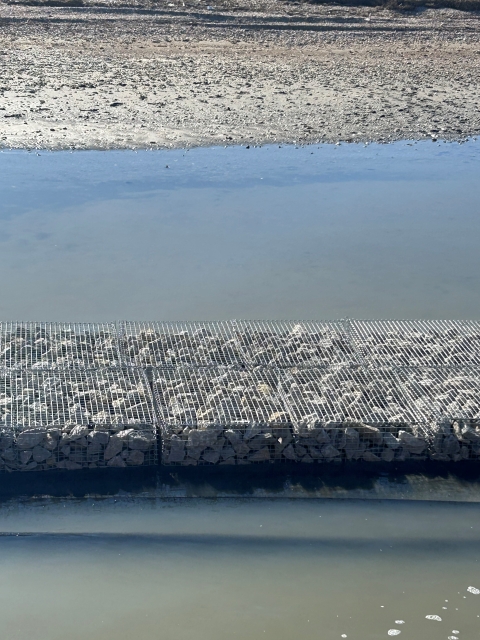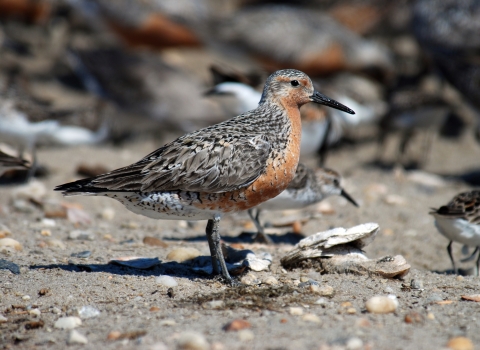At Rabbit Island, the site of the only brown pelican colony in southwestern Louisiana, we worked with Louisiana resource agencies to provide additional nesting habitat to offset injuries to colonial waterbirds hard hit by the 2010 Deepwater Horizon.
In 2020, the majority of Rabbit Island was underwater or subject to frequent flooding, and the island was no longer suitable nesting habitat. Wind-generated waves, periodic high tides, and the effects of traffic in the nearby Calcasieu Ship Channel had caused the slow erosion of the island’s shoreline.
The restoration project added 102 acres of nesting bird habitat including 81 acres for nesting colonial waterbirds and 21 acres for other birds, such as egrets, herons, ibis, terns, and skimmers. More than 65,000 plants were installed. These included smooth cordgrass, matrimony vine, groundsel bush, and marsh elder.
Experts expected approximately 370 nests in the first year after restoration. Much to their surprise, however, more than 11,600 colonial waterbird nests, of which 561 were brown pelican nests were counted.
Eager to maintain this trend, state and federal scientists began to consider ways to stave off future erosion. In 2023, they looked to The Nature Conservancy, which has an ongoing successful oyster reef restoration initiative in southwestern Louisiana. The nonprofit provided advice and expertise, and another partner, Chenier Energy, LLC, donated a portion of the funding needed for materials to add man-made oyster recruiting structures along vulnerable shoreline areas.
Late in 2023, engineers completed the installation of 810 large wire mesh gabions filled with limestone rock along the northeastern edge of Rabbit Island. At 3,000 pounds each, the gabions now form a stable protective barrier that is intended to limit the impacts of erosion and storm surge and creates a wall-like structure structure
Something temporarily or permanently constructed, built, or placed; and constructed of natural or manufactured parts including, but not limited to, a building, shed, cabin, porch, bridge, walkway, stair steps, sign, landing, platform, dock, rack, fence, telecommunication device, antennae, fish cleaning table, satellite dish/mount, or well head.
Learn more about structure behind which silt can collect and vegetation can become established.
At the same time, the limestone rock provides a proven substrate for oyster larvae, or spat, to attach to. The installation of this very simple but substantial structure is likely to lead to the creation of marsh habitat for fish, birds, shellfish, marine mammals, and other wildlife, as well as expanded recreational fishing opportunities for the public. Once the marsh habitat behind the gabions is well established, it will, along with the filter-feeding oysters, help to improve water quality.
In this way, Louisiana, the Service, and a diverse group of partners have created a multifaceted restoration project benefitting both bird and oyster habitat in southwestern Louisiana. The recent addition of shoreline protection structures to the Rabbit Island Restoration Project has made a great project even better.




